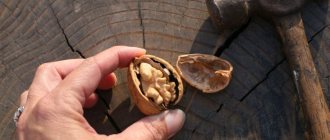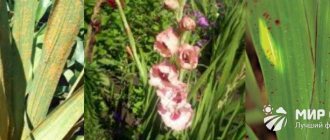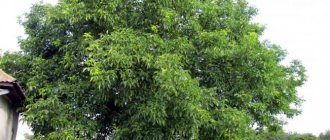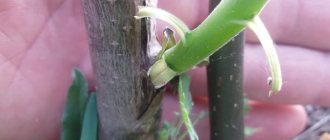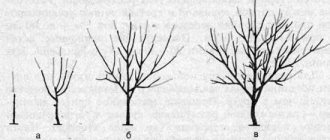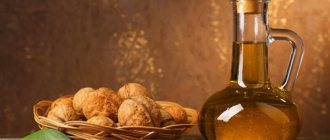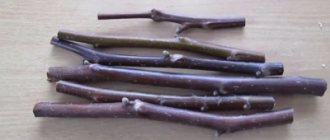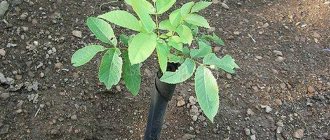Causes of diseases and pests
Many factors cause diseases of nut crops. You can determine what is happening to the tree by the condition of the bark, leaves, and fruits. When the leaves of a walnut turn black, it means that a serious infection has struck the plant. It must be dealt with immediately. Pathogenic microorganisms remain active for a long time, waiting for suitable conditions for reproduction.
They attack those plants that are planted in an area where:
- little light;
- the soil is swampy due to the close occurrence of groundwater;
- soil acidity is high;
- soils are poor in nutrients.
The nut that is weakened by winter cold and spring frosts is attacked by fungi, bacteria, as well as insect parasites. Such walnut specimens do not bear fruit and are constantly sick.
Possible reasons
The reasons that cause blackening and curling of leaves may be hidden in diseases to which walnuts are susceptible.
Common nut diseases:
- white spotting;
- brown spot;
- bacterial burn;
- bacteriosis;
- root cancer.
To understand why the leaves turn black and curl, you need to study in detail the listed diseases, the causes of their occurrence, symptoms, as well as methods of treatment and prevention.
Did you know? Under favorable conditions, the walnut harvest can be about 300 kg.
White spot
White spot is a fungus that attacks foliage. Scientific name Microstroma juglandis Sacc
. This is an exobasidial parasite (spores develop on the surface of leaves), the characteristic feature of which is a branched mycelium that has no color.
It is located between the cells of the leaf tissues and deforms them in the same way as the gall mite - the affected areas take on a convex shape. When the leaves fall, the fungus remains on them and thus survives the winter.
Reason for appearance
Most often, fungal bacteria are activated in autumn and spring during periods of heavy rainfall and prolonged dampness. Dampness is a favorable environment for the appearance of white spotting.
Did you know? The amount of vitamin C in walnuts is 50 times greater than in citrus fruits.
Symptoms
The symptoms of white spotting appear in stages. At first, barely noticeable whitish spots appear. Soon they begin to take on a distinct white color. Then the areas where the spots formed become more convex.
They have a small diameter, about 2 cm, and are located over the entire surface of the leaf. As a result of the defeat, the leaf dies.
Treatment methods
As soon as the spread of infection has been noticed, the entire plant should be sprayed with preparations containing copper . These include Bordeaux mixture 1% and 3%. The Bordeaux mixture contains lime mortar and copper sulfate. It is used to treat fruit and berry trees from diseases caused by fungus.
You can prepare it yourself, just before processing. Depending on the time of year in which spraying is planned (spring, autumn), the percentage of mixture concentration required is different. For example, a mixture of 1% is suitable for spring spraying, and 3% for autumn spraying.
Preparation of Bordeaux mixture 3%:
- Pour 1.8 liters of hot water into a non-metallic container and dissolve 100 g of lime in it.
- Pour 1.8 liters of hot water into a non-metallic container and dissolve 100 grams in it. copper sulfate.
- Stir each solution separately.
- Add the copper sulfate solution in a thin stream to the lime solution. You need to add them in exactly that order!
- Strain the resulting mixture into a non-metallic container that will be used for spraying.
Before you start spraying, you need to take safety precautions. The procedure should be carried out only with gloves and protective clothing, and the face should be covered with a mask. After completing the work, wash your hands and face with soap and running water.
Important! The ingredients must be mixed in a strictly defined order and sequence!
If the drug gets into your eyes, rinse with water and seek medical help. In autumn, the plant is treated when the leaves have completely fallen. It is recommended to repeat the procedure after 25 days.
Preparation of Bordeaux mixture 1%:
- Pour 5 liters of water into a non-metallic container and dissolve 100 g of lime in it.
- Pour 5 liters of hot water into a non-metallic container and dissolve 100 g of copper sulfate in it.
- Add the copper sulfate solution in a thin stream to the lime solution. You need to add them in exactly that order!
- Strain the resulting mixture into a non-metallic container that will be used for spraying.
It is necessary to treat the plant with this solution in the spring during the vegetative process.
Brown spot
Brown spot has another name - marsonia . The danger of this disease lies not only in its widespread distribution, but also in the scale of the damage. The causative agent of this disease (bacterium), having gone through two stages of development - conidial Marssonia juglandis P.Magn
and the marsupial
Gnomonia leptostyla (Fr.) Wint
, affects not only leaves, but also fruits, as well as young shoots.
In autumn, when the leaves fall, the bacterium remains on their surface in the form of a fruiting body. In spring, ascospores (spring spores) ripen in the fruiting body. When weather conditions are favorable for walnuts, these spores spread.
Brown spot fungus is especially dangerous in the spring, when walnuts begin to bloom, as it can destroy about 90% of the flowers. In this case, there may be no harvest at all.
Symptoms
Initially, small brown dots appear on the entire surface of the leaf. After some time, the brown tint of the spots gives way to gray. Subsequently, the spots grow and merge. The leaves quickly dry out, turn black, curl and die. Affected fruits, deprived of moisture, stop growing and lose weight, and the shell cracks. The kernels begin to rot. Affected shoots become covered with black ulcers.
Video: how to recognize marsoniosis on walnuts and how to fight it
Reasons for appearance
The reason for the development of brown spot is stagnation of moisture in the soil. Most often it occurs in nuts in late spring and early summer during the heavy rainy season. Humidity is an ideal environment for the development of bacteria.
Treatment methods
In the fall, the tree should be treated by spraying with 3% Bordeaux mixture. Fallen leaves should be burned away from the place where the walnut grows. In the spring, you need to spray at the very beginning of flowering, at the stage of bud opening, and repeat the procedure every three weeks until complete recovery occurs.
Bacterial burn
Fire blight is caused by the bacterium Erwinia amylovora (Burill.) Com.SAB
. It begins to appear in the spring, when the infection spreads from infected flowers to the branches. Until spring, the pathogen remains in the infected tree. As a result of infection with this fungal disease, extensive damage occurs to foliage, flowers, fruits and even tree bark. Leads to the death of the plant.
The cause of infection can be carriers (insects, pollen), poor disinfection of garden tools. Rain contributes to the spread of fire blight.
Symptoms:
- Formation of watery discharge on leaves and cuttings.
- Affected flowers quickly wither, but do not fall off.
- The leaves turn black at the ends over time, but remain on the branches.
- The fruits become covered with black spots, the kernels dry out and turn black.
- The bark is covered with ulcers.
- Affected leaves begin to ooze. The presence of these discharges indicates a clear sign of a bacterial burn.
- In advanced cases, the bark cracks and falls off.
What can a walnut pick up?
Infectious diseases lie in wait for plants at every turn. If there are trees in the garden with tissues damaged by pathogenic bacteria and fungi, then the neighbors will become infected from them. The type of disease can be determined by certain signs. Then a systematic fight should take into account the specifics of the infection and the characteristics of its course.
Bacteriosis
In the spring, when it is warm and damp, you need to carefully inspect walnut trees. Awakened insects can transfer pollen with pathogenic bacteria from one plant to another. Bacteriosis manifests itself as dark spots on leaves, fruits, shoots, and flowers. The period of walnut pollination is especially dangerous due to the increased likelihood of infection through pollen.
The result of the action of bacteria will be loss of yield, as flowers and ovaries will die. But the young fetus is also exposed to pathogens. Then it shrinks and falls off. And all parts of the plant become brown.
Bacterial burn
The rapid development of an infectious disease leads to the death of the tree. Looking at a sick plant is scary. It seems that the crown, the trunk - everything is burned. Black color becomes dominant on the leaves. Young shoots stop developing and dry out. The buds are dying. The inside of the fruit turns black. Cankers on the entire aerial part of the nut spread faster during rainy periods. It is very difficult to save a plant if the disease has become advanced.
Brown spot (marsoniosis)
Marsonia fungus causes spotting on the leaves and fruits of the crop. First, in May, yellowness begins to appear on young leaves. Small spots grow and turn brown. When they merge, the leaf falls off. The ovaries are also covered with reddish-brown dots. Nuts cannot be consumed internally, as the kernel deteriorates and dries out. Half of the garden crop suffers from the consequences of infection.
See also
Description of three-lobed almond varieties, planting and care technologyRead
Root cancer
The rod-shaped bacteria manage to survive the winter in the soil to begin reproducing in the spring. Through the penetration of bacteria into the roots of the walnut, the plant becomes infected. And the gates of infection are cracks and wounds on the surface of the root system. Under the influence of bacteria, growths and swellings form on the tissues of the underground part of the nut.
The pathology can be noticed by the delay in the growth of the walnut. Cancer is diagnosed by digging up the tree and examining its roots. Only timely treatment measures will save the tree from death.
Beneficial features
Typically, the simplest foods are the healthiest for the body. This also applies to walnuts, which nature has endowed with an almost ideal ratio of proteins, healthy fats, dietary fiber, plant sterols, antioxidants and many vitamins and minerals. Therefore, among all nuts, walnut is rightfully considered the king. And by eating 6–7 fruits a day, you can protect yourself from most diseases [5].
Anti-cancer properties
Walnuts help reduce the risk of prostate and breast cancer. An experiment on laboratory mice showed that after 18 weeks of a nut diet, malignant formations in prostate cells slow down in growth, and the area of damaged tissue decreases [6]. After a series of experiments, researchers released encouraging results: this fruit can reduce the activity of cancer cells by 30–40%. And the risk of developing malignant tumors in the mammary glands with the consumption of walnuts is reduced by half.
Substances contained in fruits with anti-cancer properties:
- phytosterols;
- gamma tocopherol;
- omega-3;
- ellagic acid;
- polyphenols.
Heart Health
Volosh nuts contain the amino acid L-arginine, which is especially important for people with heart disease or predisposed to heart disease. But, by the way, precisely because of the high concentration of arginine, it is better not to use the product for people with herpes, since at the treatment stage this microelement will cause relapses of the disease.
The second component that makes nuts healthy for the heart is alpha-linolenic acid. It plays the role of an anti-inflammatory agent and prevents the pathological formation of blood clots. Studies confirm that people whose diet contains sufficient amounts of this substance are less susceptible to heart attacks [7], and they have a 50% lower mortality rate due to cardiac diseases.
But that's not all the benefits of walnuts for the heart. This product helps maintain cholesterol levels within a safe range, thereby preventing atherosclerosis and other troubles caused by “greasy” blood vessels.
Antioxidants: unique and powerful
Antioxidants are critical to health. They are believed by scientists to control the aging process by fighting free radicals. Volosh nuts contain several unique and very powerful antioxidants that are not found in other foods. Almost 90% of these elements are concentrated in the skin of the fruit. The high content of polyphenolic substances reduces the activity of oxidative processes. One study confirmed that the antioxidants contained in nuts prevent liver damage due to chemical poisoning [8].
Weight regulation
Adding voloshka nuts to your diet will help you maintain a healthy weight. This is achieved not least thanks to the high protein content, which ensures a feeling of fullness for a long time.
Improving reproductive health
Scientists have proven the influence of Volosh nuts on male fertility. Research shows that individuals who consume approximately 75 g of the fruit (a little more than half a glass) daily have markedly improved sperm quality, including sperm viability and motility [9].
Brain work
Fruits containing vitamin E, folic acid, melatonin, omega-3 fatty acids, and antioxidants have a beneficial effect on the functioning of brain cells. All of these substances are contained in walnuts. It is not for nothing that even in ancient times people considered these fruits to be beneficial for the brain. Even nature itself openly hints at this with the shape of the nut kernel.
Studies in older adults have shown that regular consumption of nuts significantly improves memory [10]. A similar effect was confirmed by an experiment with the participation of young people.
For 10 months, scientists observed laboratory mice with Alzheimer's disease. It turned out that after the nut diet, their memory and learning skills improved significantly. And after eight weeks of consuming walnuts, age-related changes in brain cells slowed down in animals [11].
In addition, walnuts are believed to be useful for treating depression, insomnia, mood swings and hyperactivity in children.
Benefits for diabetes
Dietary nut fats have a beneficial effect on metabolism in people with type 2 diabetes. It is known that one of the “side effects” of this disease is excess weight. Regular consumption of walnuts (about a quarter cup on an empty stomach) reduces not only body weight, but also the level of glucose in the bloodstream [12]. In addition, this useful product helps strengthen blood vessels, which is also important for diabetics.
Insect pests of nuts
Weakened walnuts often become the target of garden pests. Insects try to lay eggs on leaves, bark, and fruit. It is difficult to notice some of the parasites, so you need to know how the results of their vital activity affect the crop.
American white butterfly
A dangerous pest of hazel plantations is an ordinary butterfly with white wings, sometimes decorated with dark dots. Having laid eggs on leaves and shoots, the female causes great damage to the tree. The gluttony of the newly born caterpillars is great. They can destroy all foliage and young growth. Having moved on to their neighbors, the parasite larvae continue their activities. Over the summer, the female makes 3 clutches of eggs, so the number of caterpillars only increases.
Sapwood
Weakened specimens of the nut crop are attacked by a black bug, the size of which varies between 3-4 millimeters. It has a black head and brown wing covers. Beetles fly intensively in June. It is difficult to see beetle larvae, as they are hidden under the bark.
If the wood is damaged, the sapwood larvae make their way inside. There they, gnawing out passages 6 centimeters long, move towards the kidneys. They feed on them. Hence the decrease in nut yield and the leakage of gum. For young plants, sapwood is dangerous because it damages their trunks.
Walnut warty mite
Fungal plant diseases cause the appearance of gall mites. Pest attacks increase during wet summer periods. An insect can be detected by the following:
- swelling appears on the leaf;
- young shoots stop developing;
- branches and leaves begin to dry;
- a thin web is visible on the underside of the leaf plate.
As the mite multiplies, it destroys walnut plantings. There are fewer fruits and the trees are weakening.
Nut moth
A small butterfly with grayish-brown wings poses a danger to walnut seedlings. The larvae, emerging from moth eggs, eat the tender stems of the plant. If caterpillars parasitize mature trees, they destroy green leaves, feeding on the succulent center. Therefore, the leaf turns yellow, dries up and falls off.
codling moth
A small moth damages the garden in its caterpillar stage. At first the larva is dark gray in color, then pinkish-white. The caterpillar feeds on young nut fruits. Having bitten the skin, it climbs inside, eating away the pulp. A dot on the surface of the nut indicates infection with the codling moth. For the winter, caterpillars in dense white cocoons hide under lumps of soil, in cracks in the bark. In spring they turn into pupae. In June, the butterfly emerges from its pupa.
See also
25 best varieties of hazelnuts with descriptions and characteristics, cultivation and care technologyRead
Disease Prevention
It is important to remember that preventing the development of walnut disease is easier than treating it later.
If you find an error, please select a piece of text and press Ctrl+Enter.
Hello, friends! All fruit trees are inevitably at risk of disease or pest infestation. The reasons for this can be either improper care or an unsuccessful planting location, or circumstances beyond the control of the gardener. Next, the main walnut diseases and their treatment will be discussed.
Methods of controlling diseases and pests
In the spring, spores of pathogenic fungi begin to multiply, so walnuts should be treated before the leaves bloom. The main remedy will be Bordeaux mixture or preparations with a high copper content.
A second treatment should be carried out if the spots on the leaves have increased in size. Spray the crown twice more every 2 weeks.
It is useful to treat trees before the inflorescences appear. After harvesting, you can spray with preparations such as “Zineb” or “Hom”.
Disease control techniques include:
- pruning damaged shoots and leaves;
- destruction of fruits if they have become brown and shriveled;
- carrying out measures until the plant is completely cured;
- burning of all plant residues in autumn;
- Digging soil in the garden in spring and autumn.
To protect against pests, both insecticidal preparations and traps are used. The number of moths in the garden is determined by how many individuals are caught in traps. Pheromone and food traps are used.
Sweet juice of fruits and berries, slightly fermented, is suitable as bait. Place the trap on the tops of trees. If there are a lot of butterflies, then it is necessary to treat the trees with pesticides. Poisons are used before the caterpillars appear. Then it will be more difficult to cope with the pest and its offspring.
Before winter, carefully inspect the bark of the trees, covering up damage and cracks with garden varnish. It is necessary to destroy the pupae and caterpillars hiding under the bark. They clean the bark of walnut trees where sapwood beetles have made their tunnels. It is imperative to remove mosses and lichens from walnut trunks.
Protection against pests consists not only of chemicals, but also of biological agents. Avermectin-based insecticides are safer. It is allowed to use products from the group of thiacloprids and chlorantraniliproles.
If you soak the branches well with insecticidal preparations during treatment, the number of pests will decrease.
Basic rules of care
In the process of growing walnuts, it is important to follow proper care. This criterion allows you to strengthen your immune system and reduce the risk of infection.
Trimming
The use of pruning branches is carried out in early spring, while the buds have not yet begun to revive. Using pruning, you can shape the crown and remove damaged areas of the tree. All dry branches and those with symptoms of disease are removed. Pruning should be done in the fall to reduce the number of insect larvae and eggs. The places where branches were pruned must be treated with an antiseptic and covered with garden varnish.
Whitewash
The use of whitewash disinfects and eliminates disease spores. Walnut whitening must be done in the spring; lime is used for this. For young seedlings, it is necessary to process not only the trunk, but also the branches.
Important. During the whitewashing process, damaged bark is removed. Damaged areas are lubricated with a solution of copper sulfate.
Watering
Walnuts at a young age need regular watering. The seedling must be watered every 3 days with plenty of water. At an older age, watering is done every 10 days. If the weather is dry, the irrigation procedure is increased.
Top dressing
During planting, the seedling is fertilized with organic matter. However, after reaching 3 years of age, fertilizing is carried out using nitrate and complex fertilizers. The procedure is done in the spring. For one tree you need to use 1000 grams of saltpeter. This substance is dissolved in 30-40 liters of water and the plant is watered.
Preparing for winter
A young plant must be covered after the leaves have fallen. For this purpose, special structures are used.
For adult crops, shelter for the winter is not used.
Preventive actions
Diseases and pests on walnuts can be prevented by a set of agrotechnical and biological measures:
- Annual thinning of the crown and removal of diseased and damaged branches will increase the illumination of the tree.
- Several times during the growing season, they loosen the soil between the rows, removing weeds.
- Inspecting the walnut for nests of caterpillars and beetles will stop their reproduction.
- Timely feeding will help grow healthy plants.
- As a preventive measure, spraying with Bordeaux mixture is used three times, starting in early spring.
- In order for a tree to bear fruit well, it must be treated in time for fungal and bacterial infections.
You should not wait until the walnut foliage begins to turn yellow; you need to water and fertilize the plant in a timely manner. Be sure to ensure that there is no damage to the bark or shoots of the nut crop.
Basics of proper tree care
Walnut is a tree that grows in almost every garden. His life expectancy is long. There are specimens that bear fruit for 400 years. To prevent the appearance of diseases and pests, you need to approach planting wisely and properly care for walnuts:
- The soil at the planting site must be fertile. It is dug up with humus or compost.
- The groundwater level should not be high. The planting pit must be drained.
- Choose a place in the sun. The tree does not tolerate shading and may die.
- After planting, the root collar of the walnut should be level with the soil.

